FAQ
Advanced Applications
Of VR Therapy
- What is a VR headset?
- What are the best VR headsets in 2025 for VR therapy?
- What are the controllers for VR headsets?
- How can you use a VR headset with eyeglasses?
- How to sanitize VR headsets?
- What are the best VR accessories to enhance your client’s experience?
- What is in-person VR therapy?
- What is VR telehealth?
- What is self-guided VR training?
- What is one-on-one and group VR therapy?
- What is AI in VR exposure therapy?
- What are AI-powered avatars In VR exposure therapy?
What is a VR headset?
A Virtual Reality (VR) headset can be described as a media device that projects an image directly in front of the user’s eyes when worn. The VR headset usage experience is renowned as highly immersive and engaging as a result of the device’s ability to interact with multiple human senses.

It starts first by engaging your vision right before bringing your hearing in on the action as well. It also links with your spatial awareness, making sure that all the available human senses are effectively used. Furthermore, a VR headset is capable of presenting its users with interactive virtual scenarios/environments such as 360-degree videos. These scenarios may include different activities which include driving, standing in the mountains, or even watching a dog.
However, the recently developed VR headsets offer a much more engaging feature – immersive 3D environments. While these environments are similar to those of video games, they are designed to serve specific functions. They make it possible for users to interact with content and also perform tasks such as calling an elevator, opening a door, or throwing a stick at a dog. Additionally, Virtual Reality helps to provide users with an escape or therapeutic environment by creating safe, relaxing, and comfortable virtual spaces.
However, the recently developed VR headsets offer a much more engaging feature – immersive 3D environments. While these environments are similar to those of video games, they are designed to serve specific functions. They make it possible for users to interact with content and also perform tasks such as calling an elevator, opening a door, or throwing a stick at a dog. Additionally, Virtual Reality helps to provide users with an escape or therapeutic environment by creating safe, relaxing, and comfortable virtual spaces.
What are the best VR headsets in 2025 for VR therapy?
We reside in a world where Virtual Reality (VR) headsets are widely accessible and considered very effective. This year (2025) is particularly significant for mental health professionals, as VR has become an essential tool to be used in various industries, including mental health services. For many therapists working within an organization including those in private practice, 2025 is regarded as the perfect time to fully integrate VR into exposure therapy.
One of the most popular VR headsets in 2025, is the MetaQuest 3S, which happens to be the latest model from Meta. According to Scathye VR experience, this VR model is the most commonly used VR headset there is. The features that contribute to this model’s popularity include its completely wireless functionality, lightweight design, high-quality visuals, and the 2 controllers that come along with it on the box. The MetaQuest 3S, 128-gigabyte version is priced at $299.
To really appreciate how far the VR industry has come, it's important that we first consider what the costs of VR bundles were back in 2019. At the time, the cost for a VR setup was valued between $3000 and $4000. The standalone VR headsets were also not yet created back then, and as a result, it was required that the headsets were connected to a high-performance gaming PC that was equipped with advanced graphics. This setup often resulted in a tangle of cables which was not an ideal experience for both the therapists and patients.
As of today, the simplicity and efficiency of lightweight, wireless, and highly productive headsets such as MetaQuest 3S have completely changed VR into a much more practical and user-friendly tool.
One of the most popular VR headsets in 2025, is the MetaQuest 3S, which happens to be the latest model from Meta. According to Scathye VR experience, this VR model is the most commonly used VR headset there is. The features that contribute to this model’s popularity include its completely wireless functionality, lightweight design, high-quality visuals, and the 2 controllers that come along with it on the box. The MetaQuest 3S, 128-gigabyte version is priced at $299.
To really appreciate how far the VR industry has come, it's important that we first consider what the costs of VR bundles were back in 2019. At the time, the cost for a VR setup was valued between $3000 and $4000. The standalone VR headsets were also not yet created back then, and as a result, it was required that the headsets were connected to a high-performance gaming PC that was equipped with advanced graphics. This setup often resulted in a tangle of cables which was not an ideal experience for both the therapists and patients.
As of today, the simplicity and efficiency of lightweight, wireless, and highly productive headsets such as MetaQuest 3S have completely changed VR into a much more practical and user-friendly tool.

Meta also makes other models available in its lineup, such as the Meta Quest 3 for example, which some users may go for. However, for individuals who have tried the latest model, the differences in features and sophisticated functionalities make Meta Quest 3S an easy and much-preferred choice. As an experienced VR specialist, I would personally recommend the MetaQuest 3S to any individual looking to start their VR journey, because of the model’s superior capabilities.
While it goes without saying that Meta dominates the VR market, there are other brands such as Pico and HTC that also provide competitive VR headsets. Pico, for example, has several impressive options in its lineup, but its limited availability in the US may have an effect on customer support and overall usability. HTC, on the other hand, provides high-quality headsets that are primarily targeted at enterprise users. However, the price for HTC’s VR devices is about 3 times the cost that Meta offers.
For therapists who are interested in integrating VR technology into their practice in 2025, the MetaQuest 3S stands out as the best option for maintaining affordability, functionality, and a great user experience.
While it goes without saying that Meta dominates the VR market, there are other brands such as Pico and HTC that also provide competitive VR headsets. Pico, for example, has several impressive options in its lineup, but its limited availability in the US may have an effect on customer support and overall usability. HTC, on the other hand, provides high-quality headsets that are primarily targeted at enterprise users. However, the price for HTC’s VR devices is about 3 times the cost that Meta offers.
For therapists who are interested in integrating VR technology into their practice in 2025, the MetaQuest 3S stands out as the best option for maintaining affordability, functionality, and a great user experience.
What are the controllers for VR headsets?
In the previous sections, we briefly mentioned that VR controllers are part of the gadget that comes alongside VR headsets in the box. They can be described as handheld devices that help users easily interact with virtual environments in an effort to achieve specific goals.
These controllers make it possible for clients or other VR users to perform different actions in virtual environments, such as calling an elevator in a claustrophobia exposure scenario, touching a syringe during a VR session for OCD-related contamination, or choosing a mindfulness script from a library while being in your personal safe space. VR controllers are crucial tools for activating features and engaging with various elements inside the simulated environments.
A lot of individuals might find the VR controllers to be challenging to operate, and their judgment wouldn’t be wrong. Understanding your way around with controllers can be time-consuming, especially for users who come for VR sessions in an anxious state of mind. At PsyTechVR, we have collaborated with over 1000 therapists, and we have observed the huge effort put in by the professionals in the beginning phases to help their clients get comfortable with the controllers.
These controllers make it possible for clients or other VR users to perform different actions in virtual environments, such as calling an elevator in a claustrophobia exposure scenario, touching a syringe during a VR session for OCD-related contamination, or choosing a mindfulness script from a library while being in your personal safe space. VR controllers are crucial tools for activating features and engaging with various elements inside the simulated environments.
A lot of individuals might find the VR controllers to be challenging to operate, and their judgment wouldn’t be wrong. Understanding your way around with controllers can be time-consuming, especially for users who come for VR sessions in an anxious state of mind. At PsyTechVR, we have collaborated with over 1000 therapists, and we have observed the huge effort put in by the professionals in the beginning phases to help their clients get comfortable with the controllers.

To help address this challenge, PsyTechVR has integrated a feature that allows their onboarded therapists to bypass the use of controllers by managing their clients’ activities in the VR simulations through a laptop. The PsyTechVR platform now includes an app dedicated to therapists, which gives them full control over their clients’ VR experience. This app ensures a seamless and supportive experience by providing therapists with the ability to guide their clients’ VR sessions, manage movements, and also activate beneficial features.
If you are looking to integrate a VR platform into your practice, it is essential that you confirm that your therapists have full control over their client’s activities throughout the sessions. This includes providing alternatives to controller-based interactions, allowing for smoother sessions, and reducing the stress that clients who are unfamiliar with VR might develop.
If you are looking to integrate a VR platform into your practice, it is essential that you confirm that your therapists have full control over their client’s activities throughout the sessions. This includes providing alternatives to controller-based interactions, allowing for smoother sessions, and reducing the stress that clients who are unfamiliar with VR might develop.
How can you use a VR headset with eyeglasses?
Individuals who wear eyeglasses can use a VR headset just as easily as those who do not wear eyeglasses. Most modern headsets now come along with a special extender in the box. This extender is a plastic insert that is designed to create extra space in the headset to accommodate the eyeglasses comfortably.
The process of fitting the insert into the VR headset is very easy, and the extender makes it possible for users to enjoy VR therapy without having to remove their glasses. This innovative feature helps to make VRET (virtual reality exposure therapy) more accessible and practical for a wide range of users.
Additionally, the VR headsets are configured to work smoothly with eyeglasses by ensuring that vision correction can still be maintained throughout the user’s VR experience. This makes it possible for clients to comfortably use VR headsets, whether for therapy or other applications, without compromising their visual needs.
The process of fitting the insert into the VR headset is very easy, and the extender makes it possible for users to enjoy VR therapy without having to remove their glasses. This innovative feature helps to make VRET (virtual reality exposure therapy) more accessible and practical for a wide range of users.
Additionally, the VR headsets are configured to work smoothly with eyeglasses by ensuring that vision correction can still be maintained throughout the user’s VR experience. This makes it possible for clients to comfortably use VR headsets, whether for therapy or other applications, without compromising their visual needs.

How to sanitize VR headsets?
Sanitizing a VR headset is very important, especially for professionals who use the same VR headset for multiple clients in a day. This is primarily because the VR headset comes directly in contact with a person’s skin during usage.
To make the sanitization process easier, there are several products available on e-platforms like Amazon that can be used to maintain your VR headset’ hygiene. Examples of these products include disposable VR masks that serve as a barrier between the headset and your client’s skin. There are also sanitizers specifically designed to clean VR headsets. The usage of these products helps to guarantee that health and safety standards as regards the use of VR headsets are met. It also gives both you and your clients confidence in a clean and safe therapeutic environment.
To make the sanitization process easier, there are several products available on e-platforms like Amazon that can be used to maintain your VR headset’ hygiene. Examples of these products include disposable VR masks that serve as a barrier between the headset and your client’s skin. There are also sanitizers specifically designed to clean VR headsets. The usage of these products helps to guarantee that health and safety standards as regards the use of VR headsets are met. It also gives both you and your clients confidence in a clean and safe therapeutic environment.
What are the best VR accessories to enhance your client’s experience?
Here are amazing Amazon accessories that help to improve your VR experience while maintaining hygiene:

1. Disposable Masks
TamBee Disposable Masks for VR Headsets (Amazon Canada)
TamBee Disposable Masks for VR Headsets (Amazon Canada)

2. Comfort Strap
KIWI Design Comfort Strap (Amazon Canada)
KIWI Design Comfort Strap (Amazon Canada)
What is in-person VR therapy?
Initially, Virtual Reality sessions were mostly conducted in face-to-face therapy either at clinics or health centers. PsyTechVR has improved on this by developing a VR app that allows therapists to hand a VR headset directly to their clients. To begin, the client usually would sit on a comfortable sofa or a chair, preferably one that can spin to promote ease and comfort during the VR experience. Afterward, the client waits for the session to begin.
The therapist then starts the session using a laptop that is modified with a unique companion platform. This platform allows therapists to fully control the VR exposure therapy and is compatible with both Windows and Mac operating systems.
The therapist then starts the session using a laptop that is modified with a unique companion platform. This platform allows therapists to fully control the VR exposure therapy and is compatible with both Windows and Mac operating systems.

What does controlling in-person VR therapy mean?
- You are able to monitor your client’s activities in real-time
- You can easily switch between multiple virtual scenarios during the session.
- You can activate relaxation practices in a scenario and transition to a specific relaxation space
What is VR telehealth?
VR telehealth is a modern phenomenon that enables therapists to carry out VR therapy sessions. For this type of session to work, your client will need to have one of the recently developed VR headsets at home and the PsyTechVR app installed. As the therapist, you will also need to have the companion platform functional on your laptop.

Here is how to go about it: You meet your client online via Zoom or another telehealth platform at a prearranged time and then agree to activate the devices. The client then puts on the VR headset, and you launch the app. With PsyTechVR software and the support of our technical team during onboarding, you should be able to access the lobby on your computer and link up with your client within seconds.
From the point the connection has been established, the session can progress just like an actual in-person VR therapy session. You become able to guide your client through relaxation exercises, exposure scenarios, and other activities as you deem fit. The entire process remains smooth and highly effective.
It is essential to understand that VR telehealth is available and it provides an immersive and highly engaging option for online therapeutic work.
From the point the connection has been established, the session can progress just like an actual in-person VR therapy session. You become able to guide your client through relaxation exercises, exposure scenarios, and other activities as you deem fit. The entire process remains smooth and highly effective.
It is essential to understand that VR telehealth is available and it provides an immersive and highly engaging option for online therapeutic work.
What is self-guided VR training?
Self-guided virtual reality training refers to a process that involves clients using the PsyTechVR app between sessions for relaxation practices such as mindfulness meditations, creating safe places, or even practicing muscle relaxation independently. To ensure progress, PsyTechVR also allows you as the therapist to customize your client’s main screen, making it so that you can control the scenarios they are able to access.
The app contains a full package of different scenarios, however, you can edit the options through your dashboard. For example, if you do not want your client to experience a driving phobia simulation without your guidance, you can simply restrict access to the simulation. This way, your clients will only be able to access the VR relaxation scenarios or meditational practices you approve of.
In contrast, if your client is struggling with a phobia of public speaking, and you would like for them to practice in the comfort of your home, then you can engage them in self-guided VR training with the headset. In cases like this, you would have to implore your client to purchase the VR glasses we discussed earlier, so they can progress with their training at home.
The app contains a full package of different scenarios, however, you can edit the options through your dashboard. For example, if you do not want your client to experience a driving phobia simulation without your guidance, you can simply restrict access to the simulation. This way, your clients will only be able to access the VR relaxation scenarios or meditational practices you approve of.
In contrast, if your client is struggling with a phobia of public speaking, and you would like for them to practice in the comfort of your home, then you can engage them in self-guided VR training with the headset. In cases like this, you would have to implore your client to purchase the VR glasses we discussed earlier, so they can progress with their training at home.

What is one-on-one and group VR therapy?
A one-on-one VR therapy refers to a type of session where you, as the therapist, control your client’s VR experience with your laptop. It involves working with just 1 patient at a time, and it includes all the VR exercises for both mental health and wellness.
It is very similar to the regular one-on-one therapy sessions, only with the inclusion of a VR component, which makes it more immersive and engaging for the client.
Group VR therapy, on the other hand, allows you to manage multiple VR headsets at the same time, and it is exclusively available with PsyTechVR. The way it works involves your clients first putting on their headsets, logging in with their credentials provided by the account manager, and connecting to the session. A therapist should be able to simultaneously manage up to 20 headsets in group VR therapy.
What makes this feature particularly impressive is the flexibility it provides. PsyTechVR Group therapy feature allows clients from anywhere in the world to participate irrespective of country or Wi-Fi differences. It could also work if all the participants were physically available in the same room. What’s most important is to understand that PsyTechVR is not dependent on Wi-Fi, as it allows for smooth group therapy sessions in spite of network constraints.
It is very similar to the regular one-on-one therapy sessions, only with the inclusion of a VR component, which makes it more immersive and engaging for the client.
Group VR therapy, on the other hand, allows you to manage multiple VR headsets at the same time, and it is exclusively available with PsyTechVR. The way it works involves your clients first putting on their headsets, logging in with their credentials provided by the account manager, and connecting to the session. A therapist should be able to simultaneously manage up to 20 headsets in group VR therapy.
What makes this feature particularly impressive is the flexibility it provides. PsyTechVR Group therapy feature allows clients from anywhere in the world to participate irrespective of country or Wi-Fi differences. It could also work if all the participants were physically available in the same room. What’s most important is to understand that PsyTechVR is not dependent on Wi-Fi, as it allows for smooth group therapy sessions in spite of network constraints.

For instance, as a therapist, you can conduct group relaxation practices that help guide multiple clients to a safe space or through virtual natural experiences. You can also carry out mindfulness meditations, group muscle relaxation exercises, or even group therapy practices. These exposure scenarios may include different phobias such as heights, driving, or flying, all of which can be easily customized to individual practices and organizations.
What is AI in VR exposure therapy?
Imagine you have a client who was attacked by a German Shepherd in a dark alley. Using the typical traditional VR exposure systems, you might be able to find some scenarios with dogs. However, it is most likely that none of these scenarios accurately show a German shepherd or are set in a dark alley background. Instead, the scenarios may depict other dog breeds or pre-set environments like parks or apartments that do not align with your client’s specific trauma.
This is where PsyTechVR AI comes in. Our company is the first ever to incorporate AI into VR exposure therapy. We have created a system that enables therapists to create specifically tailored VR exposure scenarios within 30 seconds. Just like using ChatGPT, all you have to do is type in a text prompt, and the PsyTechVR AI platform will generate a fully immersive VR exposure scenario that perfectly meets your client’s needs.
This transformative feature helps to open the window for the treatment of a wide range of mental issues, including military PTSD, social phobias, addictions, anger, specific phobias, or any type of anxiety disorder. With this AI tool, therapists can provide their clients with well-personalized exposures, making sure that the VR sessions are both effective and important to their unique experiences.
As we have previously mentioned, PsyTechVR can be used to create AI-generated immersive exposure scenarios within 30 seconds. The entire process can be carried out through an app on your laptop. All you need to do is simply type a request using your keyboard to create the desired exposure.
The possibilities of scenarios you can create using this feature can only be limited by your imagination. For instance, you can create a view from a New York skyscraper, an alarmed soldier in a rainforest, or even a car accident on a highway. The AI allows you to replicate geographical details in the scenarios by specifying a country, city, or specific location. What’s more is that you can include specific objects such as guns, bookshelves, or monuments, as well as specific public occasions like 9/11.
This is where PsyTechVR AI comes in. Our company is the first ever to incorporate AI into VR exposure therapy. We have created a system that enables therapists to create specifically tailored VR exposure scenarios within 30 seconds. Just like using ChatGPT, all you have to do is type in a text prompt, and the PsyTechVR AI platform will generate a fully immersive VR exposure scenario that perfectly meets your client’s needs.
This transformative feature helps to open the window for the treatment of a wide range of mental issues, including military PTSD, social phobias, addictions, anger, specific phobias, or any type of anxiety disorder. With this AI tool, therapists can provide their clients with well-personalized exposures, making sure that the VR sessions are both effective and important to their unique experiences.
As we have previously mentioned, PsyTechVR can be used to create AI-generated immersive exposure scenarios within 30 seconds. The entire process can be carried out through an app on your laptop. All you need to do is simply type a request using your keyboard to create the desired exposure.
The possibilities of scenarios you can create using this feature can only be limited by your imagination. For instance, you can create a view from a New York skyscraper, an alarmed soldier in a rainforest, or even a car accident on a highway. The AI allows you to replicate geographical details in the scenarios by specifying a country, city, or specific location. What’s more is that you can include specific objects such as guns, bookshelves, or monuments, as well as specific public occasions like 9/11.
This sophisticated AI tool makes it easy for mental health professionals to craft highly personalized and tailored exposures that meet the unique needs of each client. PsyTechVR specifically developed this feature to bring about enhanced precision and immersion to VR therapy.
Sounds also play an important role during VR exposure therapy by improving the immersive experience. Let’s discuss sound more in detail. Imagine creating a virtual war scenario and then activating a crying baby sound. This audio trigger is capable of evoking strong emotions, adding more depth to the session, and allowing for an increased therapeutic engagement in front of the client’s eyes.
To promote this, we developed and incorporated AI sounds into the PsyTechVR platform. This tool allows you to add tailored sounds to any exposure scenario by simply typing a prompt on your laptop. Whether it is a baby crying, a gunshot, or someone shouting in a specific language, you can generate tailored audio triggers to complement the exposure scenarios you intend to use for your client.
This feature provides therapists with more flexibility and precision as it allows them to create a more personalized and effective therapeutic experience for their clients.
Sounds also play an important role during VR exposure therapy by improving the immersive experience. Let’s discuss sound more in detail. Imagine creating a virtual war scenario and then activating a crying baby sound. This audio trigger is capable of evoking strong emotions, adding more depth to the session, and allowing for an increased therapeutic engagement in front of the client’s eyes.
To promote this, we developed and incorporated AI sounds into the PsyTechVR platform. This tool allows you to add tailored sounds to any exposure scenario by simply typing a prompt on your laptop. Whether it is a baby crying, a gunshot, or someone shouting in a specific language, you can generate tailored audio triggers to complement the exposure scenarios you intend to use for your client.
This feature provides therapists with more flexibility and precision as it allows them to create a more personalized and effective therapeutic experience for their clients.
What are AI-powered avatars in VRET?
As we have previously noted, AI is an excellent tool for handling social anxieties. At PsyTechVR, we provide AI-powered avatars that can be used for exposure therapy sessions aimed at treating social phobias.
You can modify the personality of these virtual avatars, making it so that your client is able to interact with a realistic character. These avatars are designed to give emotions and animations that appear human-like, and this makes the interaction process feel very real. The conversations held with these characters are usually dynamic and live as the avatar systems are ChatGPT-powered, and the client’s questions or answers are processed within seconds to provide responsive feedback.
This technology is especially useful in practicing situational cases, examples of which include interacting with police officers or handling a dating scenario in VR. These instances reflect how AI can improve therapy by creating realistic and engaging practice environments for clients.
At PsyTechVR, we are creating the future right now by integrating AI components to improve VR exposure therapy. We believe that the next phase of AI will not only make exposure therapy more engaging but also simpler for therapists to control.
We look towards the creation of a dashboard where therapists can easily create/choose an exposure situation or environment, provide the system with details such as sounds, and also add a few extra tasks to complete (under 3 short sentences). Then the AI will be able to generate a highly immersive scenario.
We are already making progress towards achieving this objective. Currently, we have mastered how to create 360-degree images, and very soon, we will be introducing video AI to create more engaging scenarios. On our roadmap, we have created plans to generate 3D scenarios by AI so that our users can interact with the environments more dynamically. Additionally, we intend to integrate AI avatars into our virtual scenarios with adjustable triggers to help suit the therapeutic needs of a wide range of users.
Our primary goal is to ensure simplicity with a learning curve that is not more than 15 minutes. We value the time of our therapists and we intend to provide a user-friendly product that will help their clients feel less anxious and experience effective VR therapy sessions with ease.
You can modify the personality of these virtual avatars, making it so that your client is able to interact with a realistic character. These avatars are designed to give emotions and animations that appear human-like, and this makes the interaction process feel very real. The conversations held with these characters are usually dynamic and live as the avatar systems are ChatGPT-powered, and the client’s questions or answers are processed within seconds to provide responsive feedback.
This technology is especially useful in practicing situational cases, examples of which include interacting with police officers or handling a dating scenario in VR. These instances reflect how AI can improve therapy by creating realistic and engaging practice environments for clients.
At PsyTechVR, we are creating the future right now by integrating AI components to improve VR exposure therapy. We believe that the next phase of AI will not only make exposure therapy more engaging but also simpler for therapists to control.
We look towards the creation of a dashboard where therapists can easily create/choose an exposure situation or environment, provide the system with details such as sounds, and also add a few extra tasks to complete (under 3 short sentences). Then the AI will be able to generate a highly immersive scenario.
We are already making progress towards achieving this objective. Currently, we have mastered how to create 360-degree images, and very soon, we will be introducing video AI to create more engaging scenarios. On our roadmap, we have created plans to generate 3D scenarios by AI so that our users can interact with the environments more dynamically. Additionally, we intend to integrate AI avatars into our virtual scenarios with adjustable triggers to help suit the therapeutic needs of a wide range of users.
Our primary goal is to ensure simplicity with a learning curve that is not more than 15 minutes. We value the time of our therapists and we intend to provide a user-friendly product that will help their clients feel less anxious and experience effective VR therapy sessions with ease.


Complete VR Package for $1599 *
Buying options
PsyTechVR Bundle
Your VR headset
Book a DEMO to get a 15-day FREE TRIAL, then use your own VR device or order a Meta Quest separately
15-day Free Trial, then $120/month
Includes the latest Meta Quest 3s, 12-month access, regular updates, support, training, and marketing materials
* Limited time offer until product is in stock
VR Bundle
Special offer: 35% off Storewide
$
1,599
$
2,499
- Latest Meta Quest 3s (128GB) VR Headset with the installed VR app
- 12-Month Access to PsyTechVR Platforms
- Generative-AI to create exposure scenarios
- Dedicated Support Manager
- Comprehensive 4-Hour Training & Certificate
- Exclusive Marketing Materials for your website and social media
*VR headset will belong to you with full access to the VR app store
Learn how to use VR
for therapy
Register for our workshop for mental health professionals providing knowledge and skills to integrate VR into your therapy protocols.
-
Explore clinical applications of VR
-
Enhance exposure therapy
-
Increase client engagement
-
Overcome barriers to in vivo exposure
| | Get in touch We're ready to lead you into the future of mental health Sending this information you agree to share your personal information according and limited by our confidentiality statement. |
Safe and secure






